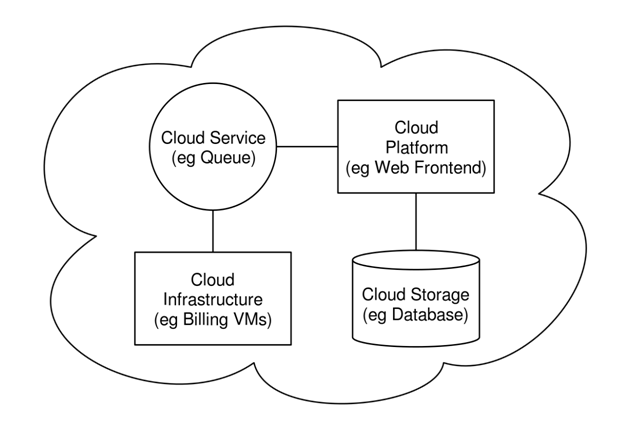How SaaS and Cloud Computing are Transforming Education

G Suite, which was once known as Google Apps combines several features that come in handy in the world of education. It allows you to:
- communicate through Gmail, Hangouts, Google+, and Calendar (that can be customized or the school's or the college's domain name),
- store unlimited data as Docs, Sheets, Slides, and Forms on Google Drive,
- collaborate through Google Sites,
- use the digital interactive whiteboard called Jamboard, and
- use advanced administrative tools and settings through the Admin Panel and Vault.
Google regularly advertises jobs for G Suite for Education Account Managers who can:
- work with new and existing institutes deploying G suite,
- understand the technology market (mainly cloud computing and Google applications),
- have excellent communication and problem-solving skills, and
- are adept at project management.
A 2018 Pew Research Center survey shows that about 68% US adults access Facebook on their cell phones and computers, while 73% use YouTube. That's about three-quarter of your parent population.
94% of 18-to-24 years old use YouTube too. Facebook remains the primary social media platform for American adults of all age groups. 35% of these young adults are also active users of Instagram, 29% are on Pinterest, 27% are on Snapchat, 25% are on LinkedIn, 24% are on Twitter, and 22% are on WhatsApp.
Each of these social media platforms requires a unique strategy to connect with the students and their parents. Together with the school media, schools can use social media to showcase how they are making a difference in the lives of kids enrolled with them.
Schools can use social media to encourage interaction between teachers, parents, and students, where they can talk about issues like school security, teacher-student relationships, and bullying. Social media (such as Facebook and Twitter) can be used as a valuable resource for education if it is used creatively for:
- discuss real-world applications of concepts being taught in class,
- post or create online assignments and assessments,
- professional development of teachers (where teachers can learn about latest education technology and trends),
- promote collaborative learning,
- promote various school activities, and
- provide real-life math examples to students.
However, if students ask for assignment help for their school or college project, they may still need to contact professional subject experts and tutors for it.
Social Media Managers employed by schools are expected to have extensive knowledge of social media, such as Facebook, Twitter, Instagram, and YouTube. They should also:
- know how to create and edit videos and images,
- be able to produce relevant posts, tweets, or other types of content for various social media platforms that can engage students, staff, parents, and teachers on a regular basis,
- conceptualize, develop, produce, and monitor a variety of social media and student engagement initiatives suitable for schools or colleges,
- form student teams and groom them in social media skills,
- make sure that the school and students’ data and personal details remain safe and secure, and
- do online reputation management for schools on a regular basis.

Cloud applications are always current and offer an affordable option. It means that you can download the latest or updated version of software from the cloud at a low cost.
IT professionals with SaaS and cloud computing skills are a hot commodity in the job markets today. Some of the skills that you might want to add to your resume are:
- Private cloud hosting and virtualization skills in Amazon AWS, Microsoft Hyper-V, and VMware, and
- Experience in using the entire cloud stack, DevOps, containers, and IPv6.
Web 2.0, .NET, Java programming, and knowledge of databases are still in demand.
Until recently, most schools and universities had their on-site servers and a horde of IT staff to manage it. Today, Google Apps and Salesforce.com have made it possible to set up a plug-and-play IT department which only needs a handful of people to maintain it.
SaaS-based vendors or cloud computing service providers make it possible to host software on the Web and allow the schools to use it for a small subscription fee. Now, schools need IT experts who can assess the technology needs of their institution, manage relationships with vendors, and work as project managers as the needs may arise.
New IT careers emerging in the field of education include working in the datacenters of SaaS vendors, and assisting in the integration of SaaS apps in schools and colleges.
Traditional IT jobs in schools and colleges are fast disappearing. In the IT field, you have to stay ahead of the curve to be able to survive for long. Developers need to embrace new programming languages and be well-versed with open Web standards, and the IT managers need to keep track of rapidly changing scenario and acquire new skills to lees their jobs.


 Aditya
Aditya






